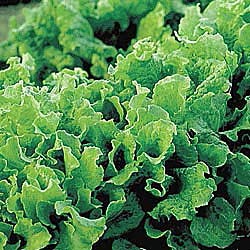Succession planting typically involves growing one crop right after another in the same space (sometimes planting the seeds of the new crop before the first crop has been harvested) or growing a single crop in succession in different growing spaces. For example, you can plant cool weather vegetables like early beets, lettuce and carrots at the start of the season, follow these up with warm weather vegetables like squash, beans and peppers which can in turn be followed up with cool weather vegetables that will be up for harvest in autumn.
Benefits of Succession planting
Better yield and manageability
Some direct-sow vegetables can be grown through multiple seasons. Vegetable growers in most zones can plant cabbage, for example, every couple of weeks in summer and harvest all the way from June end to October. This is great for gardeners with limited gardening space – by planting and harvesting a few vegetables multiple times, you can still get a good-sized yield.
Greater variety
Fast-maturing, early-season vegetables like spinach and kohlrabi can leave gaping holes in the garden once they’re harvested. Succession planting helps you to fill in the vacant space with a range of different vegetables – replace those early-harvest plants with quick-growing plants that don’t hate the heat, such as garlic. This way, you’ll have more variety in the garden and more options at the dining table.
Optimal use of growing space

Leaf lettuce, such as our Organic Black Seeded Simpson Lettuce, is a great crop for succession planting.
Succession planting allows you to grow more in the same space than you would otherwise. Planting in succession means there are no empty spaces, therefore zero wastage of good garden footage. Picking the right companions for your preferred crops (cucumbers or bush beans for sweet corn, carrots or lettuce for onions) will further help you make the best use of the available space.
This fall, try succession planting with lettuce. Plant a few rows of your favorite lettuce now and then for the next three weeks; each week, continue planting an additional two or three rows. This will give you fresh lettuce right through to a hard frost. It’s an easy way to try succession planting!
